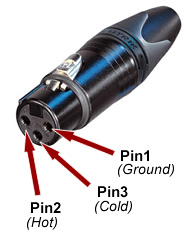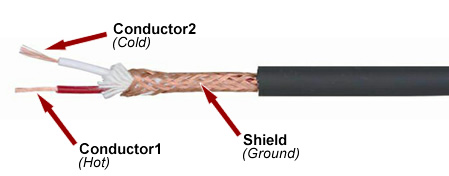Mic Level Signals Explained – Balanced, Low Impedance
Posted: 22 August 2013
Synopsis: Pro audio mics all output mic level signals, which are quite weak and therefore susceptible to any interference . For this reason mic signals are also 'balanced', with the result being that most interference picked up along the length of the cable is canc

All pro audio microphones output what is known as a Mic Level signal. This is a low impedance signal ranging typically from 200ohm to 1000ohm, carried on a microphone cable with 3pin XLR connectors.
 |
 |
A microphone works by detecting the differences in air pressure when you sing or record an instrument. The signal produced by the air pressure fluctuations is weak, and therefore any interference is very noticeable within the signal. For this reason, microphones output what is known as a 'balanced' signal which has the effect of cancelling out interference picked up along the cable, providing the mic is plugged into a balanced input such as a mixing desk mic input.
Because of the interference rejection provided by balanced mic signals, microphone cables can be run in long lengths. Multicore cables, often with stage boxes attached at one end, are really just many length of balanced microphone cable bound together and can be as long as 70m. Running a mic signal a long length will result in a small amount of signal loss, but it generally not an issue due to the fact that all mic signals are later boosted by a preamp.
Once the mic signal arrives at the mixing desk it is hopefully free of interference noise, but will require the preamp to boost the mic level signal up to an appropriate level for the mixing desk and other audio processing equipment to use. At this stage, the mic level signal has been changed to a 'Line Level' signal.
Microphones, similar to speakers, perform best when the impedance's are matched. That is saying that the output impedance of the microphone should match, or be as close as possible to the rated impedance of the preamp input. Some preamp's have a control to adjust the impedance of the input, to better suit different microphones.
There is a direct relationship between the sensitivity of the microphone and the level of gain required on the preamp. It is important to adjust the gain to an appropriate level for each microphone to ensure optimal performance if the mic and minimise the risk of feedback.
 |






